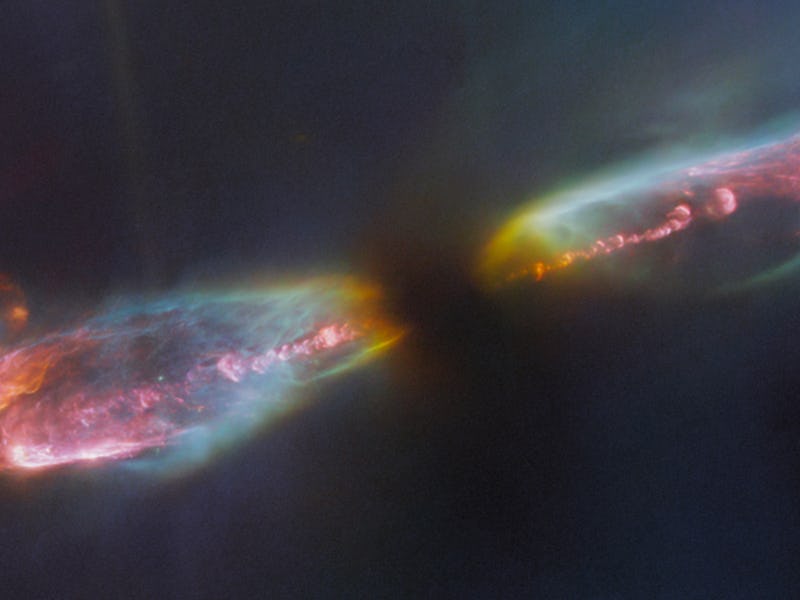Behold Supersonic Jets Spewing Out of a Baby Star’s Cocoon
The James Webb Space Telescope’s new image peers into a protostar like never before.

Astronomers are looking deep into the cocoons of stars.
New, high-resolution views of these mighty fledglings are coming from the James Webb Space Telescope (JWST), a project by the European Space Agency, the Canadian Space Agency, and NASA. Researchers recently pointed the observatory towards the dazzling object Herbig-Haro 211, and published their new picture on Thursday.
The image shows “a bipolar jet traveling through interstellar space at supersonic speeds,” telescope officials shared. The scene appears in the constellation Perseus about 1,000 light-years from Earth.
What is this object?
The image reveals Herbig-Haro objects, which are protostars or young would-be stars. They spew stellar winds out into space. When these high-speed beams collide with nearby gas and dust, they create shockwaves.
JWST’s NIRCam took this image of Herbig-Haro object 211 in August 2022. This protostar is releasing powerful jets, which then create shockwaves as they slam into the dust and gas of interstellar space.
The center of Herbig-Haro 211 is a Class 0 protostar. Astronomers think the protostar is only a few tens of thousands of years old and that it will eventually grow into a star like the Sun.
It is releasing jets at roughly 48 to 60 miles per second. Astoundingly, this outflow is “relatively slow” when compared to more evolved protostars.
What did the telescope see?
JWST took several exposures on August 28, 2022.
The telescope is designed to view the universe in infrared. This portion of the electromagnetic spectrum is useful for studying baby stars, which are fascinatingly volatile objects.
“The most powerful jets are associated with the youngest protostars,” researchers wrote in a paper published in the journal Nature about Herbig-Haro 211.
But it’s hard to see them. “This period, however, coincides with the time when the protostar and its surroundings are hidden behind many magnitudes of visual extinction,” they add.
Young stars are obscured because they are still embedded in the gas of a cosmic cloud that feeds them, like an egg that hasn’t hatched.
But infrared astronomy peers through the cosmic cloud, and reveals the dramatic scene otherwise veiled. It captured infrared emissions from molecular hydrogen, carbon monoxide, and silicon monoxide. This helped map out the structure of the outflows, according to telescope officials.
“Webb reveals this scene in unprecedented detail — roughly 5 to 10 times higher spatial resolution than any previous images of HH 211,” officials wrote.
This information is pooled into the Near-Infrared Camera (NIRCam) onboard the telescope. NIRCam’s exposures were later assigned different colors. The published image is a composite, with unique details appearing in purple, blue, cyan, green, orange, and red.